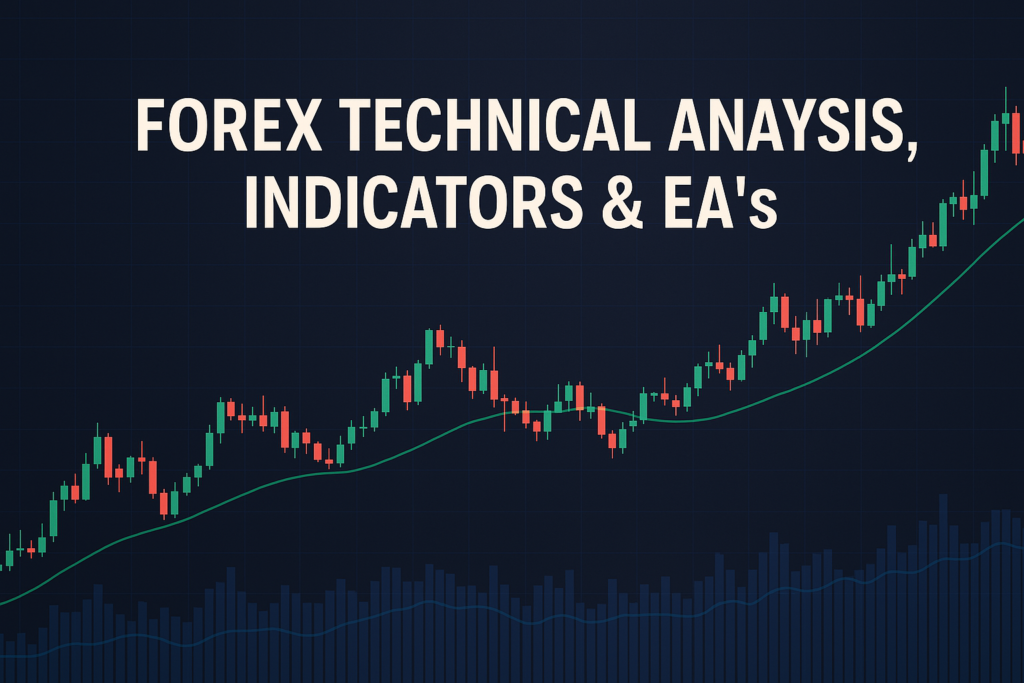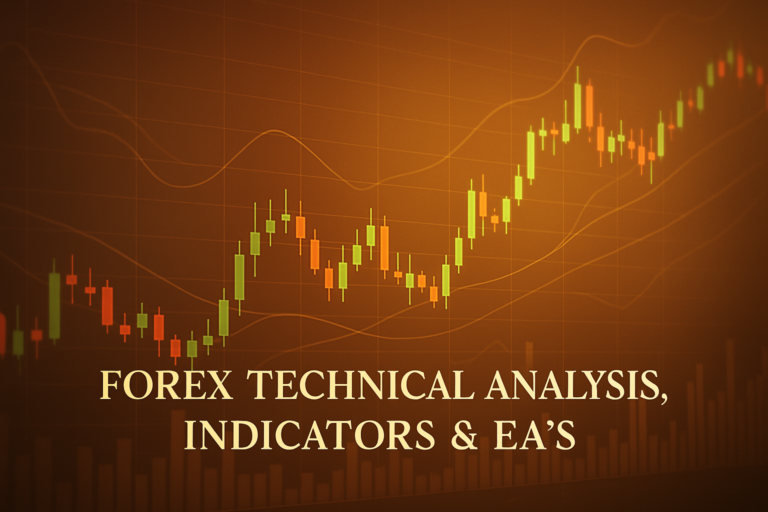
The 25 day moving average is essential for traders seeking to understand market trends and make informed trading decisions in Forex.
The 25 day moving average is a powerful tool in the world of Forex trading. It helps traders understand price trends by averaging the closing prices of a currency pair over 25 days. This average smooths out price fluctuations, making it easier to spot trends and make informed decisions. Many traders rely on this indicator to determine their entry and exit points in the market.
However, both beginners and experienced traders often struggle with using the 25 day moving average effectively. They may find it challenging to interpret the signals and apply them to their trading strategies. This understanding is crucial because mastering the 25 day moving average can significantly enhance a trader’s performance and profitability.
This article will guide you through the essentials of the 25 day moving average, covering its definition, historical significance, advantages, and disadvantages. We will also discuss how to apply it on popular trading platforms like MT4 and MT5, along with strategies that incorporate this moving average.
One common issue traders face is the Delayed triggering of stop and limit orders, which can impact their trading effectiveness.
What is a 25 Day Moving Average?
What is a 25 Day Moving Average?
The 25 day moving average is simply the average closing price of a currency pair over the last 25 days. Imagine you have a basket of apples, and each day you add a new apple while removing the oldest one. This way, you always have 25 apples in your basket. The average price helps smooth out the ups and downs of daily price changes, making it easier to see the overall trend.
Types of 25 Day Moving Average
There are different types of moving averages, including:
- Simple Moving Average (SMA): This is the most basic type, calculated by adding the closing prices and dividing by 25.
- Exponential Moving Average (EMA): This type gives more weight to recent prices, making it more responsive to current market conditions.
- Weighted Moving Average (WMA): This average also gives more importance to recent data but in a slightly different way than the EMA.
How 25 Day Moving Average Smooths Out Price Action
The 25 day moving average helps traders see clearer trends. For example, if the price of a currency pair is bouncing up and down, the moving average will show a smoother line. This line helps traders identify whether the market is in an upward or downward trend, making it easier to decide when to enter or exit a trade.
Common Periods Used and Why
Traders often use other periods, like 10, 50, or 200 days, depending on their trading style. Shorter averages, like the 10 day, are better for day trading, while longer ones, like the 200 day, are ideal for long-term positions. The 25 day moving average strikes a balance, suitable for both short and medium-term traders.
The History of 25 Day Moving Average: How It Became Popular
Origin of 25 Day Moving Average
The concept of moving averages dates back to the early 1900s. Traders needed a way to analyze price trends over time, and the moving average was born. The 25 day moving average gained popularity as traders recognized its effectiveness in smoothing price data and making informed trading decisions.
When Did Traders Start Using It Widely?
By the 1980s and 1990s, traders began using the 25 day moving average extensively. The rise of computers made it easier to calculate moving averages quickly, allowing traders to make faster decisions based on this indicator.
Real-life Stories
Many professional traders have credited their success to the 25 day moving average. For instance, a trader might have noticed a strong upward trend and decided to buy a currency pair based on the moving average’s signals. As the price continued to rise, they made a significant profit, showcasing how effective this strategy can be in real-life trading scenarios.
Advantages and Disadvantages of 25 Day Moving Average
Advantages:
- Helps Identify Trends Easily: The 25 day moving average quickly shows whether the market is trending up or down.
- Useful for Dynamic Support and Resistance: Traders can use the moving average as a level of support or resistance.
- Works Well for Crossover Strategies: When combined with another moving average, it can signal strong buy or sell opportunities.
Disadvantages:
- lags behind Price Movements: Since it’s an average, it responds slowly to sudden price changes.
- Can Give False Signals in Sideways Markets: In a market without clear direction, the moving average might lead to incorrect trade decisions.
How to Apply 25 Day Moving Average on MT4 & MT5
Step-by-step Guide to Adding 25 Day Moving Average on Charts
To add a 25 day moving average on your charts in MT4 or MT5, follow these simple steps:
- Open your trading platform.
- Select the currency pair you wish to analyze.
- Click on “Insert” in the menu.
- Choose “Indicators,” then “Trend,” and select “Moving Average.”
- Set the period to 25 and choose your preferred color and style.
- Click “OK” to display it on your chart.
Customizing 25 Day Moving Average Settings
You can customize the 25 day moving average settings to suit your preferences. Change the color for easy visibility or adjust the type (SMA, EMA, WMA) based on your trading strategy. This flexibility allows you to tailor the indicator to your needs.
Saving Templates for Easy Application
Once you have customized your chart, save it as a template. This way, you can apply the same settings to other charts with just a few clicks, saving you time and effort.
5 to 7 Trading Strategies Using Only 25 Day Moving Average
Strategy 1: All Time Frame Strategy (M5 to D1)
This strategy works across all time frames. Traders look for price to cross above the 25 day moving average for a buy signal and below for a sell signal. For example, if a trader sees the price cross above the moving average on the M15 chart, they might enter a buy trade.
Strategy 2: Trending Strategies
When the market is trending, traders can use the 25 day moving average to identify entry points. If the price stays above the moving average, it indicates a bullish trend, and traders can look for buy opportunities. Conversely, if the price remains below, it signals a bearish trend.
Strategy 3: Counter Trade Strategies
In a strong trend, some traders may choose to counter trade. If the price is below the 25 day moving average but shows signs of reversal, they may enter a buy trade, anticipating a change in direction. This requires caution, as it can be riskier.
Strategy 4: Swing Trades Strategies
Swing traders can use the 25 day moving average to identify potential reversal points. They look for price to touch or bounce off the moving average and then enter trades in the direction of the bounce. For example, if the price bounces off the moving average, a trader might enter a buy trade.
Strategy 5: Crossover Strategies
When the 25 day moving average crosses above or below a longer moving average (like the 50 day), it can signal a strong trend change. Traders can look for buy signals when the 25 day crosses above the 50 day and sell signals when it crosses below.
Strategy 6: Breakout Strategies
Traders can also use the 25 day moving average to spot breakout opportunities. If the price breaks above the moving average with strong volume, it may indicate a bullish breakout. Similarly, a price drop below the moving average can signal a bearish breakout.
5 to 7 Trading Strategies Combining 25 Day Moving Average with Other Indicators
Strategy 1: Combining with RSI
Traders can use the 25 day moving average alongside the Relative Strength Index (RSI) to confirm trends. When the price is above the moving average and the RSI is above 50, it signals a strong buy opportunity. Conversely, if the price is below and the RSI is below 50, it indicates a sell signal.
Strategy 2: Moving Average Convergence Divergence (MACD)
When the MACD line crosses above the signal line while the price is above the 25 day moving average, it can signal a strong buy. If the MACD line crosses below the signal line with the price below the moving average, it indicates a sell opportunity.
Strategy 3: Bollinger Bands
Using Bollinger Bands with the 25 day moving average helps traders identify overbought or oversold conditions. If the price touches the upper band while above the moving average, it may signal a sell opportunity. If it touches the lower band while below the moving average, it can indicate a buy.
Strategy 4: Fibonacci Retracements
Traders can combine Fibonacci retracement levels with the 25 day moving average to identify potential reversal points. If the price retraces to a Fibonacci level and bounces off the moving average, it may be a strong buy signal.
Strategy 5: Stochastic Oscillator
When the Stochastic Oscillator shows oversold conditions while the price is above the 25 day moving average, it can indicate a buy opportunity. Conversely, when it shows overbought conditions while the price is below the moving average, it signals a potential sell.
Top 10 FAQs About 25 Day Moving Average
1. What does the 25 day moving average tell me?
The 25 day moving average shows the average price over the last 25 days, helping you identify trends.
2. How do I calculate the 25 day moving average?
Add the closing prices of the last 25 days and divide by 25.
3. Can I use the 25 day moving average for day trading?
Yes, many day traders use it to identify short-term trends and entry points.
4. What is the difference between SMA and EMA?
SMA gives equal weight to all prices, while EMA gives more weight to recent prices, making it more responsive.
5. How can I use the 25 day moving average in my trading strategy?
Use it to identify trends, support and resistance levels, and entry/exit points based on crossovers.
6. Is it reliable in all market conditions?
No, it can lag during rapid price changes and give false signals in sideways markets.
7. How often should I check the 25 day moving average?
Check it regularly, but make sure to consider other indicators and market conditions.
8. Can I customize the 25 day moving average on my trading platform?
Yes, you can change its color, type, and settings to fit your preferences.
9. What should I do if I get conflicting signals?
Look for confirmation from other indicators or market analysis to make your decision.
10. Can I use the 25 day moving average for long-term trading?
Yes, it can be effective for both short-term and long-term trading strategies.
Conclusion
In summary, the 25 day moving average is a valuable tool for Forex traders. It helps identify trends, provides dynamic support and resistance levels, and supports various trading strategies. By understanding its advantages and disadvantages, you can incorporate it effectively into your trading plan.
Remember to test your strategies before using real money. Start with a demo account to practice and gain confidence in your trading abilities. The world of Forex trading is exciting, and with the right tools and knowledge, you can navigate it successfully!
Looking to go beyond the basics? This resource offers deeper insights Investing.com, NerdWallet
Expand Your Knowledge
- 📌 Forex Trading Learning Road Map
- 📌 Forex Trading Course with no Fees
- 📌 Forex Trading Issues, Problems, and Solutions
- 📌 Forex Daily Forecast & Live Updates
- 📌 Forex Fundamental & News Analysis: Tomorrow’s Market Movers & Trade Opportunities
- 📌 Forex Education Hub: Learn & Profit
- 📌 Forex Technical Analysis, Indicators & EA’s
Start Trading Today
Ready to take your forex trading to the next level? Open an account with Exness, one of the most trusted platforms in the industry. 👉 Sign Up Now and trade with confidence!
My recommended broker stands out with ultra-low spreads for beginners, instant withdrawals, and zero spread accounts for pro traders.
Trusted since 2008, lightning-fast execution, no hidden fees, and a secure, transparent trading environment—giving you the edge you need to succeed. 🚀
YouTube Video Library: Related Videos
Note: The video above is embedded from YouTube and is the property of its original creator. We do not own or take responsibility for the content or opinions expressed in the video.



